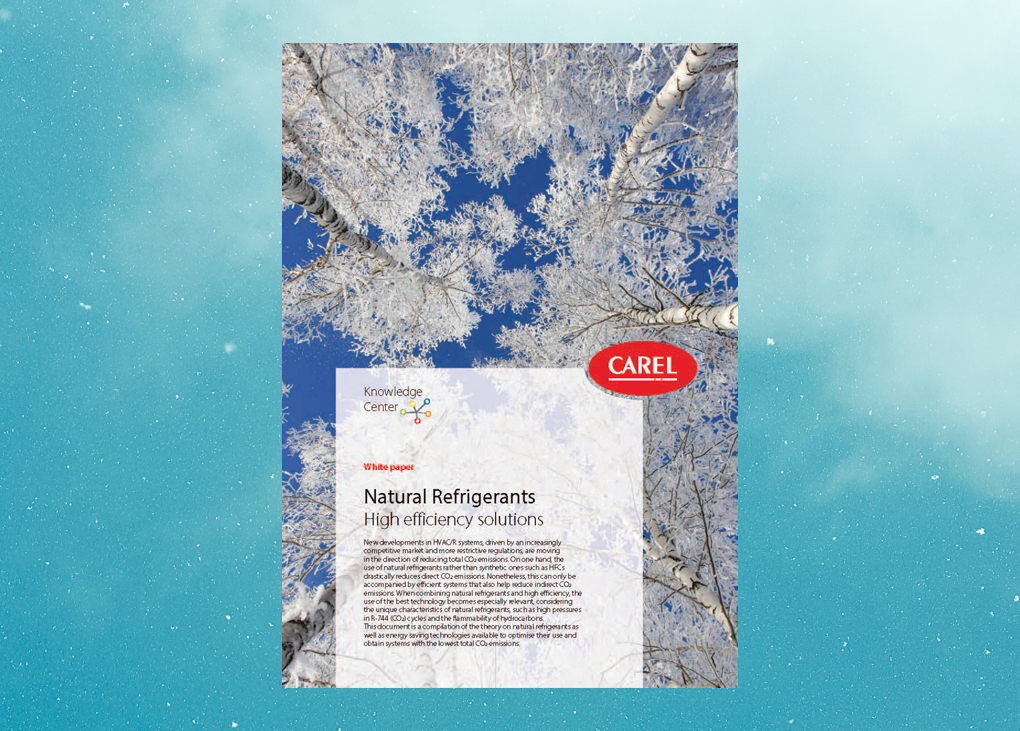HVAC&R control and humidification specialist Carel has released a white paper that examines natural refrigerants and the technologies available to optimise energy savings.
As countries around the world move to phase down HFCs in support of the Kigali Amendment to the Montreal Protocol, natural refrigerants including CO2, ammonia and hydrocarbons are increasingly being looked at as options for working fluids in HVAC&R systems. But Carel notes that it is important these systems are also energy efficient, to ensure that indirect emissions do not cancel out the direct emission benefits of lower-GWP refrigerants.
“The use of the highest-performance technology is essential for combining natural refrigerants and high efficiency,” says Carel. “There are several variables to consider: the unique characteristics of natural refrigerants, such as high pressures with R744 (CO2) cycles and the flammability of hydrocarbons.
“The aim of the ‘Natural Refrigerants’ white paper is to systematically bring together the results of years of study and research into natural refrigerants,”, says HVAC&R Technical Knowledge Specialist Miriam Solana.
“Our intention with this document is to contribute to making available as much theoretical information as possible, and providing an overview of the technologies for optimising energy savings and creating systems with the lowest total CO2 emissions.
“At Carel we believe in the importance of supporting broad use of these refrigerants, which represent a concrete and feasible response to environmental sustainability. We need to continue to study and carry out research: the goal of innovation is to achieve systems that are compatible with the unique characteristics of natural refrigerants and in compliance with regulations, without sacrificing efficiency.”
To read the white paper, click here
 Mark Vender
Mark Vender


Leave a Reply